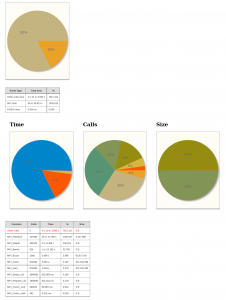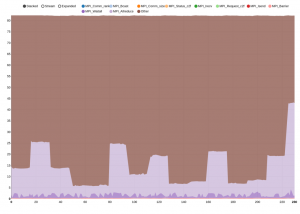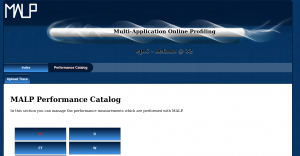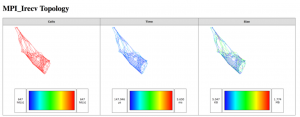Welcome to the MALP website!
What is MALP ?
MALP stands for Multi-Application on-Line Profiling it is an online performance tracing tool aiming at overcoming common file-system limitations by relying on runtime coupling between running applications.
What can I do with MALP ?
With MALP you can generate compact views of your parallel application behavior. Thanks to its web interface and interactive visualizations, you are able to better understand its MPI behavior at scale thanks to the online data-management approach.
How does it look ?
When you instrument applications inside MALP, you get all the performance data merged inside a single interactive web-based performance catalog for latter retrieval and referencing. Results being sorted by both code-name, test-case and problem size.
When browsing this catalog you can get an insight on you parallel application performance using several performance widgets.
How does it work ?
MALP uses the MPI virtualization idea originally developed inside the PnMPI tool framework in order to offload performance data from instrumented processes as soon as possible in order to be processed online. See our thechnical description for more details.
Main Features
Here is an overview of the performance widgets available in MALP. It is modular you are free to create your own !
Function Profile
 MALP can generate a function profile for both the MPI and the POSIX interface.
MALP can generate a function profile for both the MPI and the POSIX interface.
Per Rank Analysis
 Using the per rank analysis stacked graph you are able to assess the balancing of you code in one glance, understanding which calls is either causing or absorbing this imbalance.
Using the per rank analysis stacked graph you are able to assess the balancing of you code in one glance, understanding which calls is either causing or absorbing this imbalance.
Time Matrix
Would you like to see how you program behaves over time, are there imbalances or when do you call this POSIX function ? The Time Matrix allows you to see these informations in a scalable manner using a sampled density map.
Interactive Topologies
Would you like to fly through your communication topology in order to pinpoint either the imbalance areas or neighboring problems, you can do it with MALP for number of calls, overall time and total data movement.


